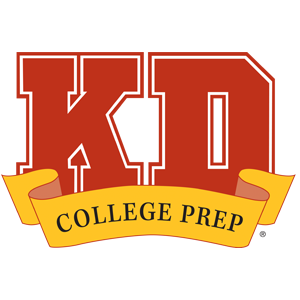You only have three years left before you head off to college! Now is the time when you’ll want to ramp up your test prep activities by following smart testing tips for 10th graders. Even if you took the PSAT 8/9 test last year, you’ll want to take additional practice tests this year, as well. Your sophomore year will fly by faster than you might think, so begin developing a plan right away.
College Admissions Testing Tips for 10th Graders
1. Begin researching colleges and score ranges
There are thousands of postsecondary institutions in the U.S. alone, so how can you go about narrowing that down to a manageable list? The easiest way to start is to focus on yourself, rather than on the college. Consider what your career interests are and what you hope to get out of your college experience. Some factors include:
- Size – Do you prefer a small, close-knit campus or a large school?
- Academic programs – Choose one to three academic fields that you’re passionate about and look for schools with strong programs in those areas.
- Cost – What’s your budget like? How are you paying for college?
- Location – Do you want to stick close to home or do you have an adventurous spirit?
Those are the primary factors to consider, but you’ll also want to think about sports (Are you a Division 1, 2, or 3 athlete or an avid fan?), the social scene, extracurriculars, and the school’s reputation. Some additional factors may come into play for certain individuals. For example, if you have an interest in joining a sorority or fraternity, you’ll find the college experience to be far more enjoyable if you choose a school that has a vibrant Greek Life with lots of organizations to choose from and clear paths to get involved.
Once you’ve reflected on your priorities, you can begin developing a list of schools you’re interested in. The next step is to research the test score ranges for those colleges. You can find the score ranges listed on the schools’ website or Common Data Set file for the most recent year. By identifying the score ranges for your target schools, you’ll have a better idea of the score range you’ll want to achieve.
2. Become more familiar with common types of SAT® and ACT® test questions
Long before you sit down to take the SAT and ACT tests, you’ll want to become familiar with the types of questions you’ll find on them. There are too many types of questions to list in this blog, but here’s a snapshot:
- Inference questions – Make a logical conclusion based on provided details.
- Big picture questions – Identify the main purpose or point of view of a passage.
- Context questions – Define a word in its context.
- Data reasoning questions – Interpret provided data.
In addition, you’ll also answer questions about algebra, complex equations, geometry, and trigonometry. On the ACT test, you’ll also answer science-related questions. It’s also important to note that big changes are coming to the SAT and PSAT tests in the fall of 2023.
3. Improve your study habits and time management skills
In many schools, students are told what to study, but they aren’t necessarily taught how to study. The sophomore year is a good time to work on improving your study habits and time management skills, as you’ll need to increase the intensity and total time of your study sessions leading up to the ACT and SAT tests.
Unfortunately, there is no one-size-fits-all solution regarding study habits, as different students learn best in different ways. It’s a good idea to try a few different techniques to find what works best for you. For instance, you could try flashcards, study groups, and rephrasing or rewriting the material in your own words to see if you truly understand it.
Time management is also an important skill that you can improve upon. Getting better at time management doesn’t mean you have to stick your nose in a book for eight hours straight. (In fact, students usually learn better in shorter sessions.) Rather, good time management involves making the most of the time you have. Work on eliminating distractions during your study sessions and staying focused on the task at hand.
4. Increase the amount of time you spend preparing for tests
The amount of study time you dedicate each week for the ACT and SAT tests will depend on your answers to a few key questions, including:
- What is your baseline score?
- What is your target score range?
- When are you taking the tests?
- How much study time will your schedule allow?
In 10th grade, it’s generally a good idea to increase the amount of time you spend working through your online test prep program. Some students might benefit from adding another hour per week, while others may need more. It really depends on your individual factors. You know yourself best, so consider where you currently are academically speaking, and where you’d like to be to determine what your ideal study schedule should be.
If you are currently enrolled in a test prep program like KD’s Complete Program, ask an experienced advisor for a recommendation that’s unique to your goals.
5. Take practice tests and attend test reviews
Of all the testing tips for 10th graders, this is among the most impactful. Long before you sit down to take an official practice test like the PSAT 10 test, you should begin taking practice tests online. (If you’re in a test prep program, you’ll have access to plenty of practice tests.) Taking a practice test is a highly effective way to prepare for the real deal as long as you continue to learn how to improve in challenging areas of the tests.
You can time yourself to simulate the testing environment, which will enable you to determine if you need to speed up your pace. You’ll gain valuable practice answering questions, and a review of your tests will let you know which areas you need to focus more on in your study sessions. You should not be simply testing over and over again with no reviews. Learning from and correcting your mistakes is a critical step in the process.
6. Improve your reading speed
Start by taking a timed practice test to determine how crunched for time you feel during each section. If you feel like you didn’t have enough time, you’ll need to work on improving your reading speed. Try these general tips:
- Read! Daily reading—especially college-level historical documents, American literature, or analytical materials—can help you improve your reading speed for similar passages found on the tests.
- Improve your vocabulary so that difficult words don’t trip you up.
- Find a happy medium between skimming and deep reading.
- Learn how to stay engaged while reading the passage—even if you don’t find the subject matter particularly interesting.
For more guidance, read about how to improve reading scores on admissions tests.
7. Take the PSAT 10 test
You’ll take the PSAT 10 test in the spring of your sophomore year, if it offered by your school district. Even if you took the PSAT 8/9 test, you should also plan on taking the PSAT 10 test. Not only can it help you identify problem areas ahead of the SAT test, but it can also provide insights as to which Advanced Placement (AP) classes you may do well in. Plus, it provides great practice for the PSAT/NMSQT test, which you’ll take as a junior. Additionally, you can choose to opt into the Student Search Service, which can connect you to scholarship and college opportunities.
To find out how to sign up for the PSAT 10 test, contact your high school counselor.
8. Take the PreACT test (if available)
Much like the PSAT test, the ACT test also offers a practice version for students. The PreACT test is a practice version that allows you to assess what your ACT test score is likely to be. You’ll be able to identify your problem areas so you know what to focus on in your study sessions leading up to the ACT test. In addition, doing well on the PreACT test might enable you to qualify for certain scholarships.
Some schools will administer the PreAct test during the school year. Ask your guidance counselor when your school’s test date will be. The PreACT test is typically administered during the school day. It consists of four timed sections:
- Math
- English
- Reading
- Science
The highest possible score for the PreACT test is 35. Keep in mind that not every school will offer the PreACT test, so it’s important to inquire about it by contacting your high school counselor.
9. Plan when to take the SAT and ACT tests for the first time
No guide on testing tips for 10th graders would be complete without a look at test scheduling. At this point in your high school journey, it’s possible to take the SAT and ACT tests as soon as the next available testing date. However, it may not necessarily be advisable.
At KD College Prep, we generally recommend students finish testing by the end of 11th grade. The tests are given multiple times each year, so build a testing plan that includes at least two attempts. Plan ahead to select your test dates and make a note of the registration deadlines.
Should you take the ACT or SAT tests as a 10th grader?
Yes. In fact, you can take both tests as early as 8th grade. However, we do strongly recommend that you wait until 11th grade. These tests will evaluate advanced concepts that you’ll continue to learn throughout 10th grade and 11th grade. This means that if you take the tests too early, you may be tested on material you haven’t learned yet.
What should I be doing in 10th grade to prepare for college?
In addition to following these testing tips for 10th graders, there are a number of other steps you can take to get ready for college. Sign up for challenging courses that align with your career interests, and be sure to keep your grades up. Continue participating in extracurriculars, particularly those that enable you to step into a leadership role. Volunteer for an organization with a charitable cause that you’re passionate about. Lastly, discuss your future with your parents, your guidance counselor, and work on building relationships with your teachers (they may write letters of reference for you).
Should I start preparing for the ACT or SAT test in 10th grade?
If you haven’t yet started preparing for the SAT and ACT tests, you should definitely begin doing so right away. However, it’s best to begin preparing at least by 9th grade. We even offer prep programs for high-performing 7th and 8th graders, who want to be challenged by advanced curriculum.
What is a good test score for a 10th grader?
College Board establishes benchmarks by grade level. If you meet or exceed those benchmarks, you are considered on track to be college-ready. In 10th grade, the benchmarks are as follows:
- Evidence-based reading and writing: 430-760
- Math: 480-760
Not to worry if you fall below those benchmarks at this point. You still have plenty of time to prepare to take the test again in 11th grade.
ACT, Inc. doesn’t release percentile’s by grade level, but here is an overview of ACT score percentiles.
When should 10th graders take the PSAT test?
You can take the PSAT 10 test in the spring of your sophomore year. Note that the PSAT 10 test is not the same as the PSAT/NMSQT test. You should take the latter test during your junior year to qualify for the National Merit Scholarship.
Is the PSAT/NMSQT test harder than the PSAT 10 test?
Yes, the PSAT/NMSQT test is designed for juniors, whereas the PSAT 10 test is designed for sophomores. The tests have some slight differences, but the College Board website states that they have the same level of difficulty.
Why should students take the PreACT test?
The PreACT test is similar to the PSAT test in that you can treat it like a practice test. It’s a little easier and shorter than the ACT test, with no essay section. It’s always a good idea for 10th graders to take the PreACT test for the following reasons:
- You’ll be able to assess your readiness to take the ACT test.
- You’ll identify your problem areas ahead of the ACT test.
- You’ll get suggestions for career possibilities based on your answers to the Interest Inventory section.
Do colleges look at the PreACT test?
The PreACT test is generally used as a practice test. It can help you assess your readiness for the ACT test. It’s not necessary to share your PreACT test score with colleges. However, you might choose to do so if you wish, and you can even share your score with scholarship organizations. Sharing your score may open the door to scholarship opportunities and college recruitment.
Need help preparing for admissions tests?
These testing tips for 10th graders can help you prepare for the SAT and ACT tests, but you don’t have to prep on your own. With KD College Prep, you can gain access to comprehensive test prep programs designed for a range of grade levels, including the Complete Program for 10th Grade and one-on-one tutoring. Contact us today to request a free consultation.














































